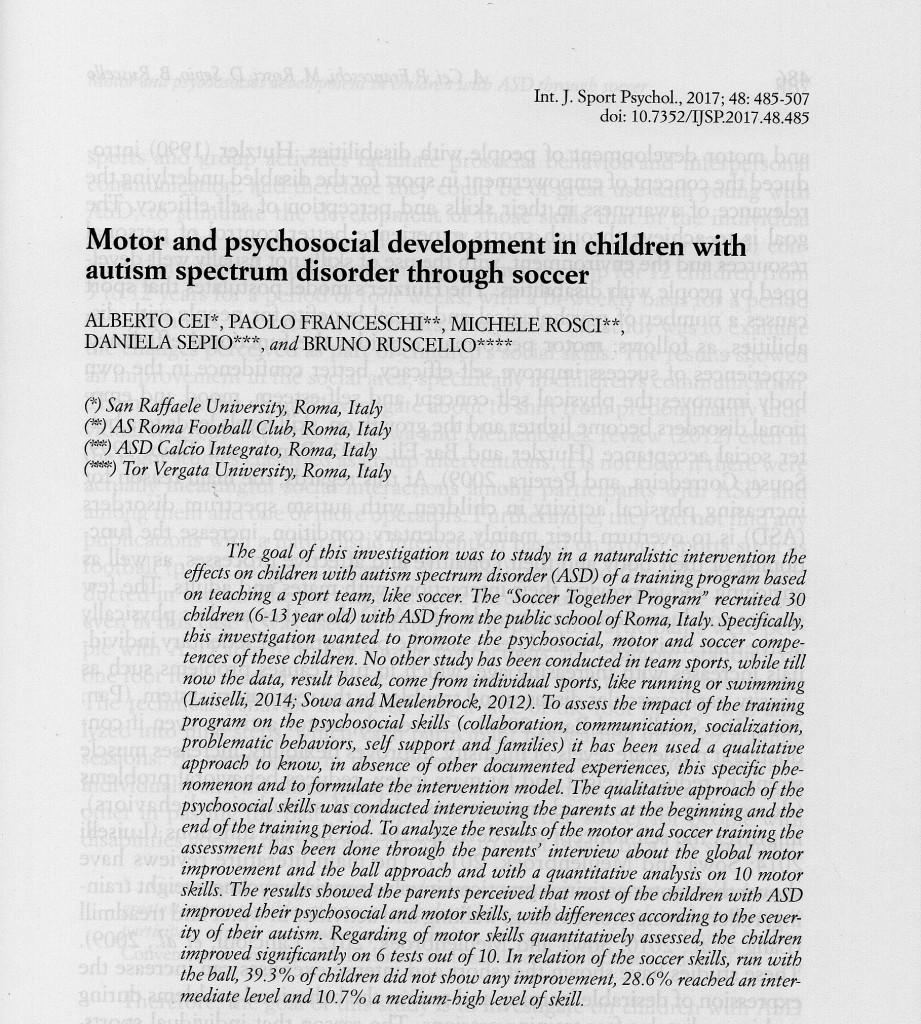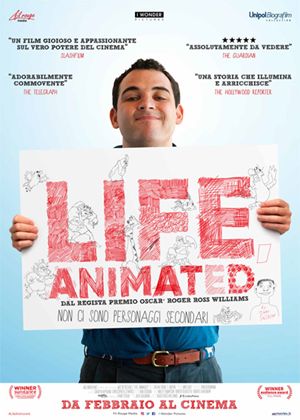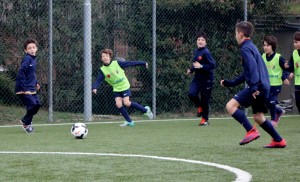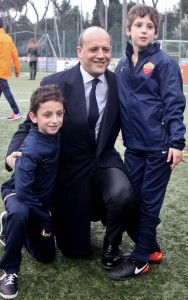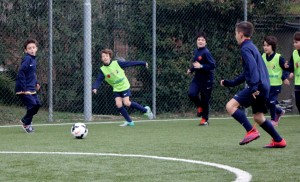Lo sport si sta sempre più avvicinando al mondo dei giovani con autismo (ASD) e può essere di notevole aiuto nel migliorare le loro abilità motorie e il loro grado di autonomia, nonché nel ridurre il rischio che acquisiscano uno stile di vita sedentario. Questa rassegna, anche se di qualche anno fa, fornisce informazioni importanti a coloro che vogliono proporre dei programmi di educazione motoria e sportivi ai giovani con ASD. Non si trovano informazioni pratiche ma quelle teoriche, basate su dati scientifici, che chi si avvicina a questi giovani dovrebbe conoscere (ovviamente insieme a molte altre).
Motor Coordination in Autism Spectrum Disorders: A Synthesis and Meta-Analysis
Kimberly A. Fournier, Chris J. Hass, Sagar K. Naik, Neha Lodha, and James H. Cauraugh
J Autism Dev Disord (2010) 40:1227–1240
The literature focusing on gross motor behavior and development in ASD is plagued by inconsistent findings.
ASD is associated with greater clumsiness, motor coordination abnormalities, postural instability, and poor performance on standardized tests of motor functioning
Several studies failed to detect differences between children with ASD and those with learning disabilities or mental retardation, general developmental delay and language disorders across reflexive, intentional, fine and gross motor tasks.
These studies provide critical information regarding the types of motor impairments seen in ASD, but the specific patterns and sources of motor deficits in this population remain unclear.
Other approaches to elucidating motor components of ASD include neural signaling. Abnormal transmission in the serotonergic, dopaminergic, and GABAergic systems, frequently observed in ASD, may potentially affect motor performance
Individuals with ASD have larger total brain, cerebellar and caudate nucleus volumes; however, the area of the corpus callosum is reduced.
Several related studies in which motor behavior was evaluated using home videos of children later diagnosed with ASD compared to typically developing children demonstrated motor differences within the first 2 years of age.
This review study showed:
Differences in motor performance observed are not dependent upon a specific diagnosis within ASD. Indeed, individuals diagnosed with autism, globally as ASD, or Asperger’s syndrome all possessed significant motor deficits compared to the individuals with normal neurologic development.
An immature postural system may severely limit the emergence and performance of other motor skills.
Movement disturbances such as akinesia, dyskinesia and bradykinesia may affect a person’s ability to initiate, switch, continue or effectively communicate, interact socially, or perform activities of daily living.
That motor coordination deficits were more prevalent in individuals diagnosed with ASD than in controls with neurologically typical development.
Consistent evidence for an increase in total brain volume as well as specific brain regions including the cerebral hemispheres, caudate nucleus, and cerebellum in autism. Conversely, the corpus callosum was consistently reduced in size. Moreover, post mortem studies have detailed increased numbers of altered cortical mini-columns that may lead to a less well-organized cerebral cortex and less integration among brain regions reported children with high functioning autism demonstrated diffusely decreased connectivity across the motor execution network relative to children with normal neurodevelopment.
Children with high functioning autism had significantly smaller grey matter volumes in subcortical, posterior cingulate, and precuneus regions than those diagnosed with Asperger’s. Compared to controls, smaller grey matter volumes in predominantly frontopallidal regions were observed in high functioning autism where as in Asperger’s less grey matter was observed in bilateral caudate and left thalamus. It has been found higher white matter volumes around the basal ganglia in high functioning autism than in Asperger’s or controls. Both ASD groups, however, possessed greater white matter volume than controls. Conversely, both ASD groups had less frontal and corpus collasol white matter.
Taken together these mechanistic findings suggest a broad, large area with disarranged neuronal organization and cortical connectivity across ASD.
